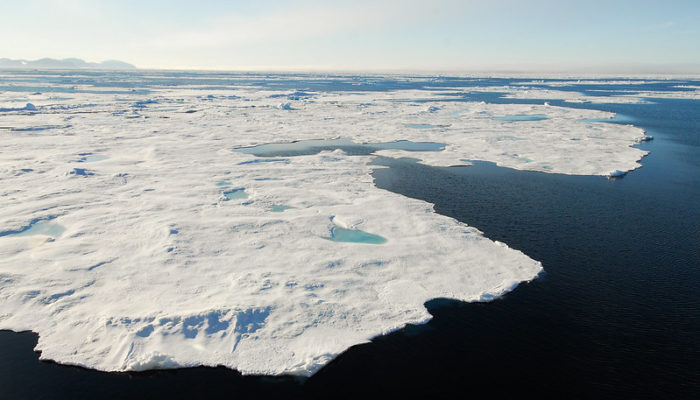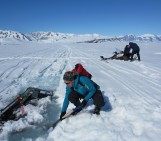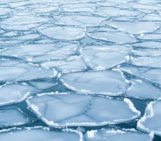
We may not often think about it, but climate in Antarctica can be very different depending on where we are exactly (do not expect palm trees though!). Winds play a big role in shaping these differences, which are reflected – among other things! – on sea ice. But how are these winds related to the large-scale atmospheric circulation, and are we having an impact on them? Dear readers, please meet one of the main players in the Antarctic atmosphere: the Asmund…. Amsund… Amunsd… Oh, well, let’s just start!
Role of the winds in the Antarctic climate system
We are all quite used to hear about the decline of sea ice in the Arctic, but its Antarctic counterpart does not often make it to the news. However, in February 2022, the Antarctic sea-ice extent reached a record low level over the satellite era (the post-1979 period) that did not go unnoticed. John Turner and colleagues showed in a recent paper that winds played a key role in that event. In particular, a climatological (i.e. long-term weather conditions) low-pressure system located in the Amundsen Sea, called the Amundsen Sea Low, may be the main driver. The Amundsen Sea Low is present all year long because of the high density of storms in the Amundsen Sea area (>550 depressions per year on average) and is therefore clearly visible when looking at monthly or yearly averages of the atmospheric pressure. This past austral summer, the Amundsen Sea Low also showed a record high strength (i.e. very low!) and might be the main cause of the record low sea-ice extent in February 2022.
How are the Amundsen Sea Low and the sea ice linked?
The Amundsen Sea Low has deepened since the mid-20th century and has received a lot of attention over the past decades. And for good reasons, since the Amundsen Sea Low may be the main driver of the large changes observed over the last years, including the melting of glaciers that flow into the Amundsen Sea area, strong variations in continental temperature and snow accumulation from region to region, as well as changes in sea-ice cover. But how is the Amundsen Sea Low the main driver of those changes? Low-pressure systems spin clockwise in the Southern Hemisphere, therefore when the Amundsen Sea Low is stronger, the northward airflow is enhanced towards the Peninsula (see figure below), bringing moist and relatively hot air from the ocean, thus resulting in mild (wet and warm) conditions in that region. In contrast, on the opposite flank of the pressure center, the flow of continental, cold air from the Antarctic Plateau to the Ross Sea is increased, leading to a general cooling in the western West Antarctic Ice Sheet area. Winds are thus shaping the Antarctic climate by modifying the airflow patterns around the Antarctic Ice Sheet.

(left) Sea-ice extent in August 2022 (red) and averaged sea-ice extent over 1981-2010 (blue). (right) Sea-level pressure anomalies relative to 1981-2010 climatology. The magenta box corresponds to the Amundsen Sea area. Data comes from the National Snow and Ice Data Center (NSIDC) and the latest ECMWF atmospheric reanalysis ERA5.
An example of how the winds associated to the Amundsen Sea Low can affect sea ice is given by the recent sea-ice cover state in August 2022 (mid austral winter). In the western Peninsula, it was very similar to the normal conditions, while in the Ross Sea the sea-ice cover displayed high positive anomalies, indicating an unusual excess of sea ice (figure above). This sea-ice cover pattern strongly suggested the role of the Amundsen Sea Low: in fact, the sea-level pressure anomaly map showed a large deepening of the Amundsen Sea Low.
What about the cause of these wind changes?
There is of course, given these two consecutive events, a debate as to whether this deepening of the Amundsen Sea Low is driven by anthropogenic activities, or rather by natural fluctuations of the climate system. Without a clear understanding of the contribution of the forced variability (e.g., related to forcings such as the greenhouse gas emissions) and the unforced variability (e.g., related to natural variability associated with the chaotic nature of the climate system), our confidence of the future projections of changes in the West Antarctic climate is limited. To quantify the role of human activities on the deepening of the Amundsen Sea Low since the mid-20th century, Dalaiden and colleagues used paleo-based reconstructions of the Amundsen Sea Low along with large ensembles of climate model simulations in concert with a statistical method (e.g., a detection and attribution algorithm). They showed that the deepening of the Amundsen Sea Low cannot be explained by the natural variability of the climate system, and therefore only the anthropogenic forcing is the cause, in particular, the greenhouse gas and ozone depletion forcing.
Implications for the future West Antarctic climate
Since the deepening of the Amundsen Sea Low over the past decades seems to be anthropogenically driven, we expect that the strength of the Amundsen Sea Low will increase in the coming decades. However, the Montreal Protocol in the 90s, aimed at forbidding the production of chemical substances responsible for the ozone depletion layer, has allowed the ozone hole to start recovering since the end of the 90s. By modifying wind patterns, this recovery could mitigate the future deepening of the Amundsen Sea Low due to the increased greenhouse gas emissions, and therefore mitigate the impact of changes in the Amundsen Sea Low on the West Antarctic climate . Let’s see what will happen in the coming years!
Further reading:
- Dalaiden Q, Schurer, A.P., Kirchmeier-Young, M.C., Goosse, H. and Hegerl, G., West Antarctic surface climate changes since the mid-20th century driven by anthropogenic forcing, Geophysical Research Letters, 49, e2022GL099543. In press (2022).
- Turner, J., Holmes, C., Caton Harrison, T., Phillips, T., Jena, B., Reeves-Francois, T., et al. (2022). Record low Antarctic sea ice cover in February 2022. Geophysical Research Letters, 49, e2022GL098904.
Edited by Marie Cavitte
Quentin Dalaiden is a Postdoctoral Fellow at the Earth and Life Institute, UCLouvain (Belgium). Its main research topic focuses on the understanding of the historical hydroclimate changes, with particular attention to the Antarctic region. You can contact him at quentin.dalaiden@uclouvain.be.
Bianca Mezzina is a post-doctoral researcher at the Université catholique de Louvain (Earth and Life Institute) in Belgium. After a PhD on the atmospheric teleconnections of El Niño-Southern Oscillation, she recently embarked on a new adventure in the world of Antarctic sea ice. Will it be love, or just a summer fling? Only time will tell… To be honest, she is not really a hiker, but the picture seemed appropriate for this cryoblog! Oh, and she is still figuring out Twitter at @biancamzn. You can contact her at bianca.mezzina@uclouvain.be.



![For Dummies – How do wildfires impact permafrost? [OR.. a story of ice and fire]](https://blogs.egu.eu/divisions/cr/files/2019/10/DJI01011-161x141.jpg)


